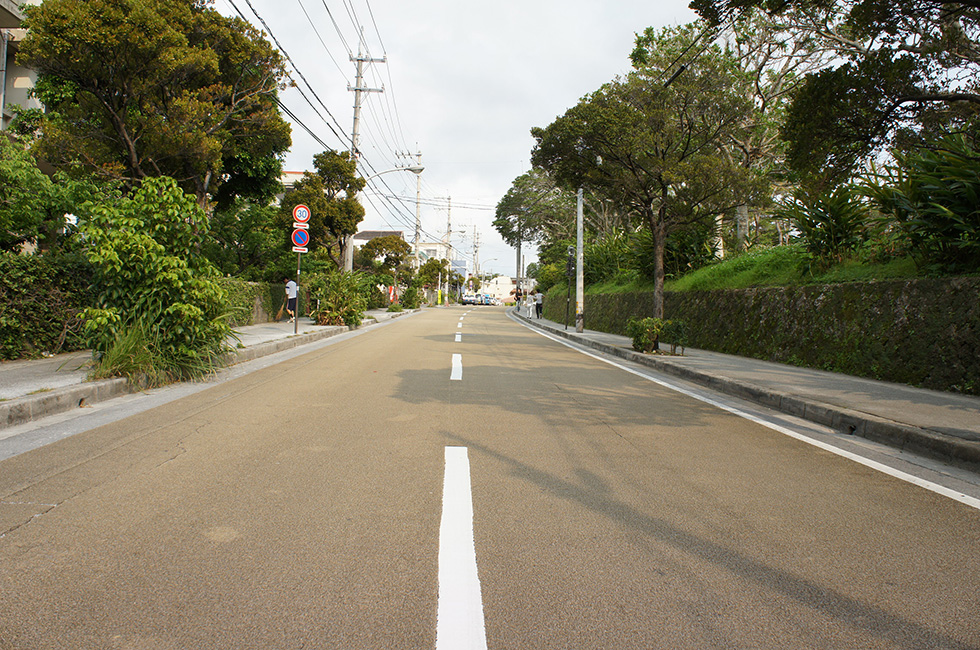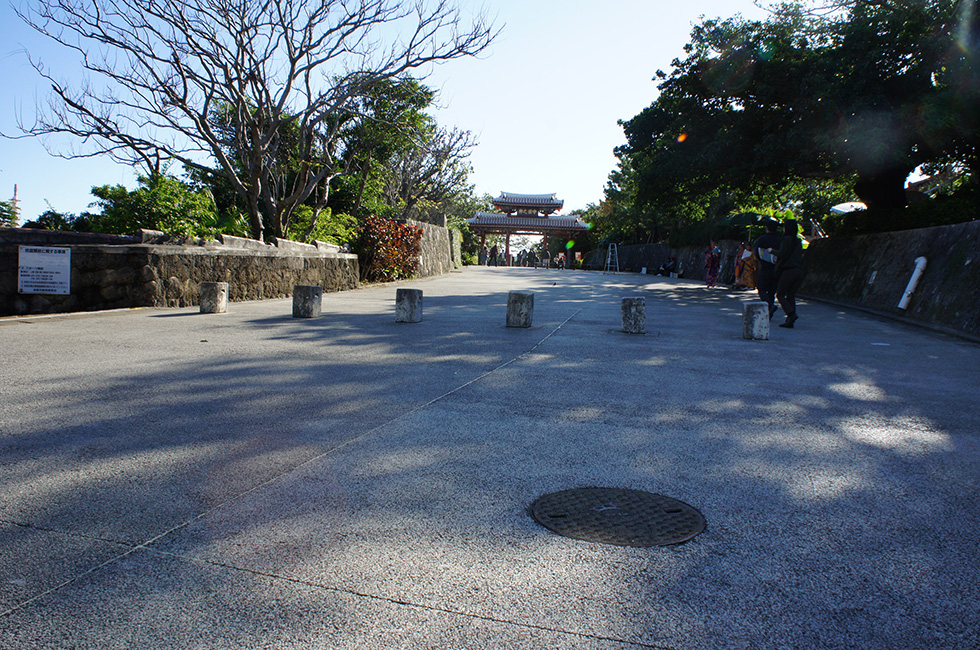Ayajo Ufumichi・Chuzanmonato
Home > Visitor’s Guide > Ryukyu Kingdom exploration ~American writer's gaze~ > Ayajo Ufumichi・Chuzanmonato
Ayajo Ufumichi・Chuzanmonato


The main avenue of approach to Shuri Castle was known as the Ayajo Ufumichi, “Road to the Beautiful Gate.” It ran east to west for about 500 meters from the Chuzanmon Gate to the Shureimon Gate, and has been called the “golden mile of Ryukyu” by some historians. This avenue was a grand public space lined with important buildings, palaces, and aristocratic residences including the crown prince’s residence; the royal guesthouse; the Tamaudun Royal Mausoleum; a villa used by envoys from the Satsuma domain; Ankokuji and Tenkaiji temples; and important sanctuaries in the indigenous Ryukyuan religion called utaki, which also faced the street. Reflecting its importance, the Ayajo Ufumichi was paved with finely crushed and smoothed limestone gravel.
The members of the elite community around Shuri Castle were the primary users of the Ayajo Ufumichi, and the avenue was their social and cultural center. Commoners were unlikely to visit the avenue casually, and social norms at the site are believed to have required quiet, moderate behavior and correct etiquette. During New Year celebrations, however, public events were held on the Ayajo Ufumichi, including horse races, with contestants competing not for speed but for riding style, and a large-scale tug of war. During the kyubon festival of the dead in the seventh month of the traditional lunar calendar, temporary stalls were erected to sell food and trinkets to the townsfolk.
Today a modern road follows the route of the Ayajo Ufumichi on the approach to Shuri Castle. While the Tamaudun Royal Mausoleum and Ankokuji Temple (though in altered form) still stand, the sites of the grand residences that formerly lined the avenue are now occupied by schools and other contemporary structures.
Chuzanmon Gate
A Chinese-style wooden roofed gate called Chuzanmon, erected in 1428, marked the beginning of the Ayajo Ufumichi. About 100 years later, the Shureimon Gate was built to mark its opposite end. The design of the two gates was almost identical, and for centuries the pair were major urban landmarks delineating the castle approach.
The name Chuzanmon came from a gift presented to the Ryukyuan King Sho Hashi (1372–1439) by an envoy of the Ming Emperor in 1425, commemorating the king’s investiture and coronation. The gift was a calligraphic inscription of the characters for Chuzan (Middle Mountain), referring to the domain under which the king successfully united three rival principalities into a single Ryukyuan kingdom. The Chuzanmon Gate was built to display a large lacquered tablet featuring a reproduction of this inscription as a means for the ruler to publicly declare the legitimization of his dynasty by the Chinese sovereign. The Chuzanmon Gate was an extremely significant political and cultural monument. After the dissolution of the royal government in the 1870s, the gate gradually fell into disrepair as the Ayajo Ufumichi, the avenue leading to Shuri Castle, lost relevance. The gate was dismantled in 1908, and now can be seen only in photos.
© Shurijo Castle Park All Rights Reserved.


